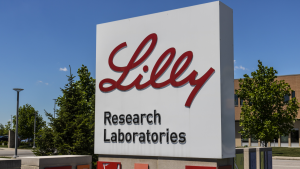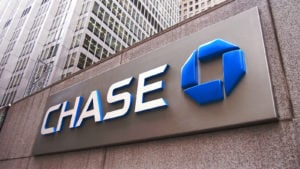It’s gotten so bad for the billionaire and his electric vehicle company that Quartz asked its readers if Abercrombie & Fitch (NYSE:ANF) should replace Tesla in the Magnificent 7.
“Tesla is in a bunch of trouble: Its latest-and-greatest product is a rusty truck that has trouble going uphill in the snow. Its losing EV market share in the U.S. CEO Elon Musk reportedly has a drug problem so bad his board member friends want him to go to rehab,” wrote Quartz contributor Melvin Backman.
Hey, I’ve been on the Abercrombie bandwagon for a while now. In December, I suggested that ANF was an excellent long-term buy despite being up more than 200% in 2023. It’s got gross margins to die for.
But, seriously, you can’t possibly put a $6 billion market cap in the same league as an EV maker that generated $4.4 billion in free cash flow in 2023. They’re two completely different kettle of fish.
To be in the Magnificent 7, you should have a market cap of at least $500 billion. That leaves just six companies that qualify outside the Mag 7. Of those, just two are tech stocks.
These would be my three candidates to replace Tesla in the exclusive group.
Berkshire Hathaway (BRK-A, BRK-B)

Berkshire Hathaway (NYSE:BRK-A),(NYSE:BRK-B) has a market cap of $872.5 billion, $252 billion higher than Tesla.
And even though Warren Buffett trimmed his stake in Apple (NASDAQ:AAPL) in the final quarter of 2023, it still makes up about 45% of the holding company’s portfolio. At the very least, that makes it an honorary tech business.
If you argue that Berkshire can’t qualify because it’s not growing fast enough, that holds some water, but it shouldn’t preclude it from being a candidate. Think of all of the billionaires that Warren Buffett has made over the years because people invested in his company.
In May 2019, Bloomberg published an article discussing how his company’s growth helped create at least seven billionaires, including the late Charlie Munger, Buffett’s long-time friend and Vice Chairman.
I know several families whose lives have been greatly changed because their parents invested in Berkshire B shares when they first came out in 1996.
I’m sure Buffett never gets tired of hearing these stories. It’s simply magnificent.
Eli Lilly (LLY)

Eli Lilly (NYSE:LLY) has a market cap of $720.2 billion, $99 billion higher than Tesla.
Theoretically, the Magnificent 7 shouldn’t just be technologically magnificent and contribute to society. I’m not suggesting that everything Tesla has done in renewable energy and automotive isn’t a contribution because it is.
However, without healthcare companies like Eli Lilly developing life-saving drugs, many more people would have no life to appreciate.
Reading the story about Teddy Roosevelt’s wife and mother dying on Valentine’s Day, 1884, makes me think of the progress we’ve made regarding simple things such as sanitary living conditions. Roosevelt’s wife likely died of a strep infection, and his mother died from typhoid caused by contaminated food or water.
On Feb. 13, Jefferies analyst Akash Tewari raised his price target on LLY stock to $853, $39 higher than his previous target and 13% higher than where it’s currently trading. He maintained a Buy rating on the stock.
The analyst estimates the company’s orfoscerinib drug in clinical trials has potential peak annual sales of $14 billion, $3 billion higher than the consensus estimate.
JPMorgan Chase (JPM)

JPMorgan Chase (NYSE:JPM) has a market cap of $519.7 billion, $101.2 billion less than Tesla. I’ve selected it because it’s over $500 billion, and Jamie Dimon’s a banking machine.
On Feb. 15, JPM stock hit an all-time high of $180.04. While that’s great news, you won’t get rich quickly owning the bank stock. Since 1984, its shares have gained 1,516%. That’s decent, made better by a 2.5% dividend yield, but it’s not a home run like Deere (NYSE:DE), which is up 6,726% over the same period.
However, once interest rates move lower, Dimon and the company should be able to increase profits. Until then, get paid a dividend that yields 2.3%. Plus, analysts like its stock. Of the 26 that cover it, 19 rate it a Buy (73%), with a target price of $194, 8% higher than its current share price.
In 2023, JPMorgan had an interest income of $170.6 billion. Unfortunately, due to high interest rates, its interest expense was 48% of its interest income. In 2022, when rates were lower, its interest expense was 28% of its $92.8 billion interest income.
When rates come down, it won’t have to work as hard to earn a higher margin on its loans, etc.
On the date of publication, Will Ashworth did not have (either directly or indirectly) any positions in the securities mentioned in this article. The opinions expressed in this article are those of the writer, subject to the InvestorPlace.com Publishing Guidelines.
Will Ashworth has written about investments full-time since 2008. Publications where he’s appeared include InvestorPlace, The Motley Fool Canada, Investopedia, Kiplinger, and several others in both the U.S. and Canada. He particularly enjoys creating model portfolios that stand the test of time. He lives in Halifax, Nova Scotia.
